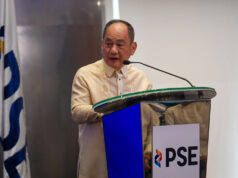Constitutional change and transitory provisions: Lessons from history
WHEN Congress or a constitutional convention begins proposing revisions to the 1987 Constitution much attention and discussion will focus on the transitory provisions.
Sections of the proposed constitution that suspends elections scheduled under the present constitution, extends the term of incumbent officials, and grants the incumbent president additional extraordinary powers will all be included in the transitory provisions. Deliberations on this article of the proposed constitution can easily eclipse those on the provisions proposing a federal-parliamentary form of government.
History demonstrates the critical importance of a new constitution’s transitory provisions. I refer to the transitory provisions of the 1973 Constitution.
The constitution which the 1971 Constitutional Convention approved on Nov. 30, 1972 and which took effect on Jan. 17, 1973 established a parliamentary government with a unicameral National Assembly (NA), a prime minister exercising executive power and a president who was “symbolic head of state.”
But parliamentarism under the 1973 Constitution never actually operated because of its transitory provisions: Article XVII.
Article XVII, Section 1 created an interim National Assembly (INA) “which shall exist immediately upon the ratification of this Constitution.” Strictly speaking, it was the INA that replaced and abolished Congress under the 1935 Constitution, not President Ferdinand Marcos. The INA was to “continue until the Members of the regular National Assembly shall have been elected and shall have assumed office following an election called for the purpose by the interim National Assembly.” Thus, although the regular NA came into existence with the 1973 Constitution’s ratification, it was not operational until the INA called for the election of its members. Without the regular NA, there was no prime minister as this official was to be “elected by a majority of all the members of the National Assembly from among themselves” (Article IX, Section 3). Without the PM, there was no Cabinet as its members were appointed by the PM (Article IX, Section 4). Thus, the realization of the 1973 Constitution’s parliamentary provisions hinged on the INA.
 Article XVII, Section 3 (1) provided, however, that “the incumbent President of the Philippines shall initially convene the interim National Assembly. . .” Furthermore, the incumbent president “shall continue to exercise” his powers under the 1935 Constitution as well as the “powers vested in the President and the Prime Minister” under the new constitution “until he calls upon the interim National Assembly to elect the interim President and the interim Prime Minister.” Although the INA existed “immediately upon the ratification” of the 1973 Constitution, it was not operational and could not exercise its powers and functions until Marcos initially convenes it. Section 3(1) of the transitory provisions gave Marcos full discretion on when to convene the INA.
Article XVII, Section 3 (1) provided, however, that “the incumbent President of the Philippines shall initially convene the interim National Assembly. . .” Furthermore, the incumbent president “shall continue to exercise” his powers under the 1935 Constitution as well as the “powers vested in the President and the Prime Minister” under the new constitution “until he calls upon the interim National Assembly to elect the interim President and the interim Prime Minister.” Although the INA existed “immediately upon the ratification” of the 1973 Constitution, it was not operational and could not exercise its powers and functions until Marcos initially convenes it. Section 3(1) of the transitory provisions gave Marcos full discretion on when to convene the INA.
Marcos never convened the INA and therefore the regular NA never actually existed and operated and parliamentarism under the 1973 Constitution never actually came to be. In not convening the INA, Marcos cited the outcome of a January 1973 plebiscite-referendum in which an overwhelming majority of voters ratified the new constitution on condition that the INA not be convened. Proclamation No. 1103 (dated Jan. 17, 1973) suspended the convening of the INA.
Thus, the 1973 Constitution’s transitory provisions created the very conditions that prevented the full implementation of the constitution’s other provisions. Such is the critical importance of any constitution’s transitory provisions.
Sans the INA, Marcos continued to exercise legislative power. This power was moreover retroactively affirmed by Section 3 (2) of the same transitory provisions that empowered him to indefinitely postpone the convening of the INA. All the proclamations, presidential decrees, executive orders and letters of instruction he issued were made “part of the law of the land” and he was given the continuing power to make new laws that would modify, revoke, or supersede his previous laws.
More forebodingly, without the INA to call the regular NA into actual existence to elect a new president and PM under the 1973 Constitution, Marcos remained incumbent president indefinitely. Thus, the apprehension expressed by Con-Con Delegate and former Supreme Court Associate Justice Jesus Barrera (1896–1988) when the transitory provisions were being debated in October 1972 that Marcos would “unduly delay” the convening of the INA and thus be “president for life” came true (62 SCRA 340-1, 31 January 1975).
Because of Section 3 (1) of the transitory provisions, Marcos remained incumbent president and in September 1976 he called for another referendum-plebiscite to ratify nine amendments to the 1973 Constitution which he himself proposed. Under the proposed amendments, the interim Batasang Pambansa (IBP) replaced the INA. When Marcos convenes the IBP, it shall elect him PM with all the powers of president under the 1935 Constitution and the powers of the PM and president under the 1973 Constitution. Amendment No. 5 provided that the incumbent president shall continue to exercise legislative power until martial law is lifted but Amendment No. 6 gave him continuing power to make laws even after martial law in cases of grave emergency when the IBP fails to act. All proposed amendments were ratified and became part of the 1973 Constitution in October 1976.
Thus did the transitory provisions of the 1973 Constitution help execute and perpetuate the autogolpe and autocracy of Ferdinand E. Marcos.
It is therefore imperative that all sectors concerned pay special and keen attention to the transitory provisions of the draft constitutions being circulated and proposed. Their federal-parliamentary provisions may just be a façade to surreptitiously advance the hidden agenda behind moves to change the constitution lurking in the transitory provisions.
Millard Lim is a lecturer at the Department of Political Science, Ateneo de Manila University.



